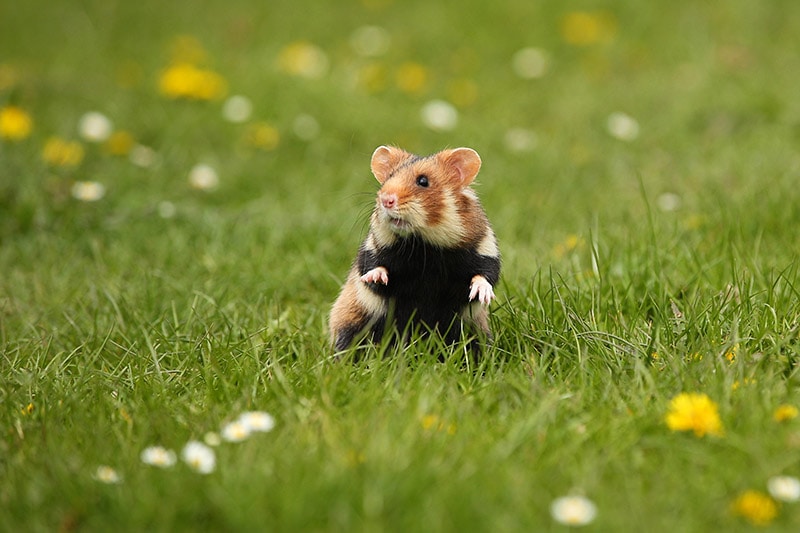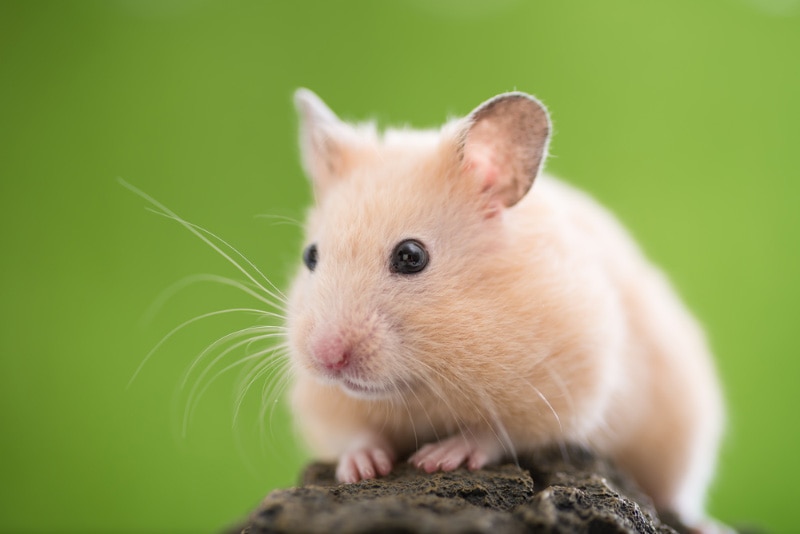Can Hamsters Eat Arugula? Vet-Reviewed Facts & Safety Guide
Updated on

Click to Skip Ahead
Arugula is a leafy green vegetable used in—yes, you guessed right—salads, sandwiches, and as a garnish. It is also known, perhaps more commonly, as salad rocket. It is a robust green with a spicy kick to it, similar to a hit of pepper or mustard. This green veggie is a great way of adding excellent nutrition into not only your own diet but to your hamsters too, as this delightful salad leaf is safe to feed to your hamster.
While this is good news, there are some factors surrounding feeding arugula to your hamster that need to be observed. We will look at those and lay out the full story of feeding arugula to your pet hamster below.
Benefits of Arugula for Hamsters
Leafy greens are a great and safe option to add to your hamster’s diet, and arugula is no exception. It helps to provide the nutrition and type of foods domesticated hamsters require. In the wild, hamsters scavenge and often live on a diet consisting mainly of fruits, seeds, cereals, leaves, plants, and insects, along with the odd frog or lizard. Pet hamsters, therefore, need their diet at home to mimic their original eating habits, requirements, and choices as much as possible. Enter Arugula.
It is advisable to feed a selection of veggies to your hamster every week, and arugula is an acceptable choice to do just this. It appears most hamsters enjoy munching these nutritious leaves too!
Vitamin A (great for vision, skin, and the immune system), vitamin C (can also boost the immune system), iron (important in making red blood cells), calcium (needed for healthy bones), and fiber (necessary to maintain a healthy gastrointestinal system) are all contained in raw arugula. And in 100 grams of raw arugula, you can expect the following nutrition:
- 25 calories
- 7 grams of water
- 6 grams of fiber
- 58 grams of protein
- 66 grams of fat
- 15 milligrams of vitamin C
- 119 micrograms of vitamin A
- 109 micrograms of vitamin K
- 46 milligrams of iron
- 97 micrograms of folate
- 369 milligrams of potassium
- 47 milligrams of magnesium
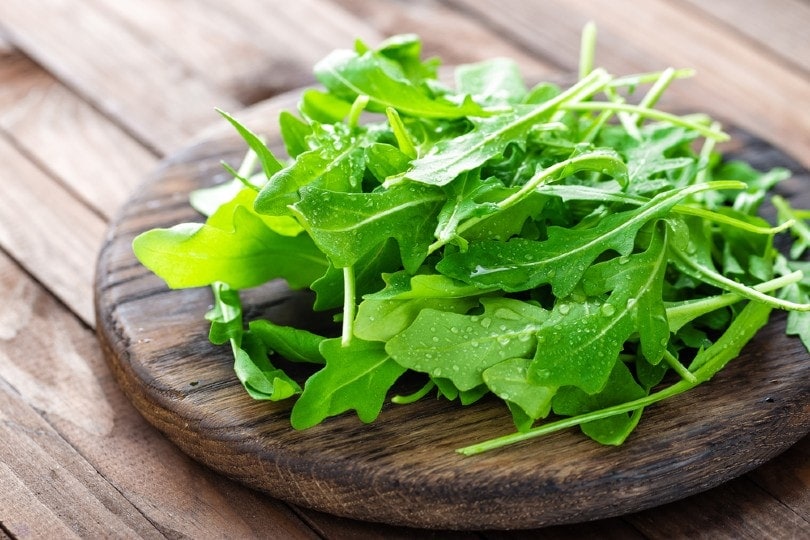
How to Feed Arugula to Your Hamster
Hamsters generally enjoy their snack of arugula raw, in the same way most veggies are given to hamsters. It can be offered to them steamed. Fully cooking it will remove some of its nutrition, though.
Be sure to wash the leaves thoroughly to remove any bugs, pesticides, dirt, and debris, before feeding chopped leaves to them, all while ensuring this veggie forms part of their balanced diet and is not their only source of food or only vegetable type offered.
Feeding a small amount (no more than one teaspoon for a Syrian hamster) of arugula once to twice a week as part of their vegetable mixture is an ideal way of offering this leafy green.

What Are the Health Risks of Feeding Arugula to Your Hamster?
Hamsters can have sensitive digestive systems and it is important not to make any sudden dietary changes. If arugula is new to them only offer a tiny amount to start off with and monitor them for any concerns, particularly of digestive upset.
Excess amounts of arugula may also result in tummy disruptions, causing signs such as:
- Stomach discomfort or pain
- Diarrhea
- Constipation
- Bloating/gas
- Lethargy/sluggishness
- Reduced appetite
Should you notice any of these signs or are concerned at all, stop feeding your hamster the arugula and contact your veterinarian.

What Do Hamsters Eat Daily?
A balanced diet for domesticated hamsters includes a daily mixture of roughly:
- 75% of a hamster pellet compound formulation
- 20% fresh produce
- 5% treats
Pellets are a commercial diet offering complete nutrition for your hamster. They are readily available from pet stores, supermarkets, or online stores. These complete pellet diets contain all the correct nutrients and amount a hamster needs. Be sure to purchase a complete and balanced diet specifically for hamsters, as diets for other rodents are not the same and cannot be fed instead.
Seed mixes are also a nice option to offer, as they enjoy nibbling on these, but they have a habit of selective eating, meaning they only pick out the ones they love. A main diet that is seed-based only or makes up the majority of your hamster’s diet is not advised as it is not nutritionally balanced. A few added to their pellets a few times a week is acceptable as a treat, however.
Fresh produce, such as leafy greens, dandelion, and clover, can be offered in small amounts daily.
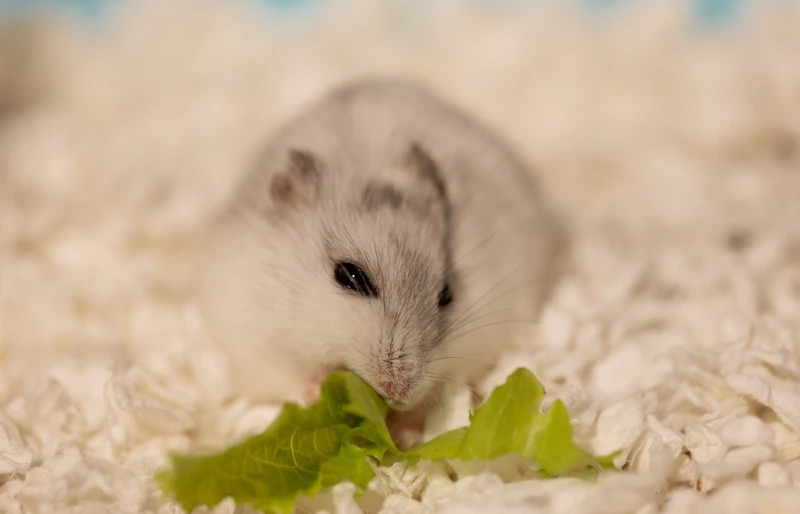
What Human Foods Can Hamsters Eat?
As with all extra treats and snacks for hamsters (and any small, furry pets), these need to be given in moderation and only then if they are marketed as treats for hamsters or, if you are offering human food, you know that it’s safe to give them.
Here are a few healthy and safe (human) foods you can feed to your pet hamster. Any uneaten fruits or veggies need to be removed after around 10–12 hours.
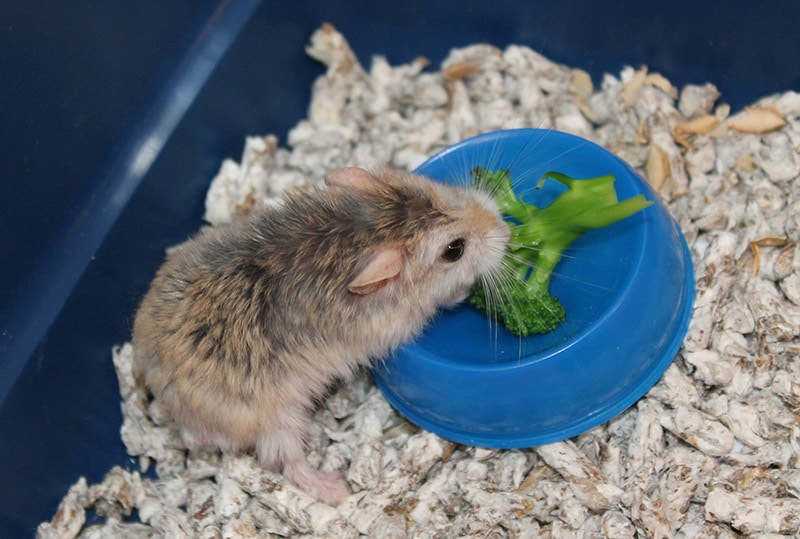
- Breakfast cereals or grains that contain no sugar
- Leafy greens
- Sweet Potato
- Cauliflower
- Seeds
- Carrots
- Apples
- Raisins
- Peas
- Pepper
- Cucumbers
- Blueberries
- Spinach
Conclusion
Leafy greens are healthy and fantastic vegetables for hamsters to consume, and this includes arugula. Not only is it healthy but your hamster will also likely enjoy the taste, although some may not be as partial to the peppery taste as you are! Just be sure to feed this salad vegetable to them in moderation and within the recommended guidelines. Alternatively, check in with your veterinarian if you are unsure about the serving sizes or health concerns for your individual hamster, as they are all unique!
Featured Image Credit: Sergey Fatin, Shutterstock


